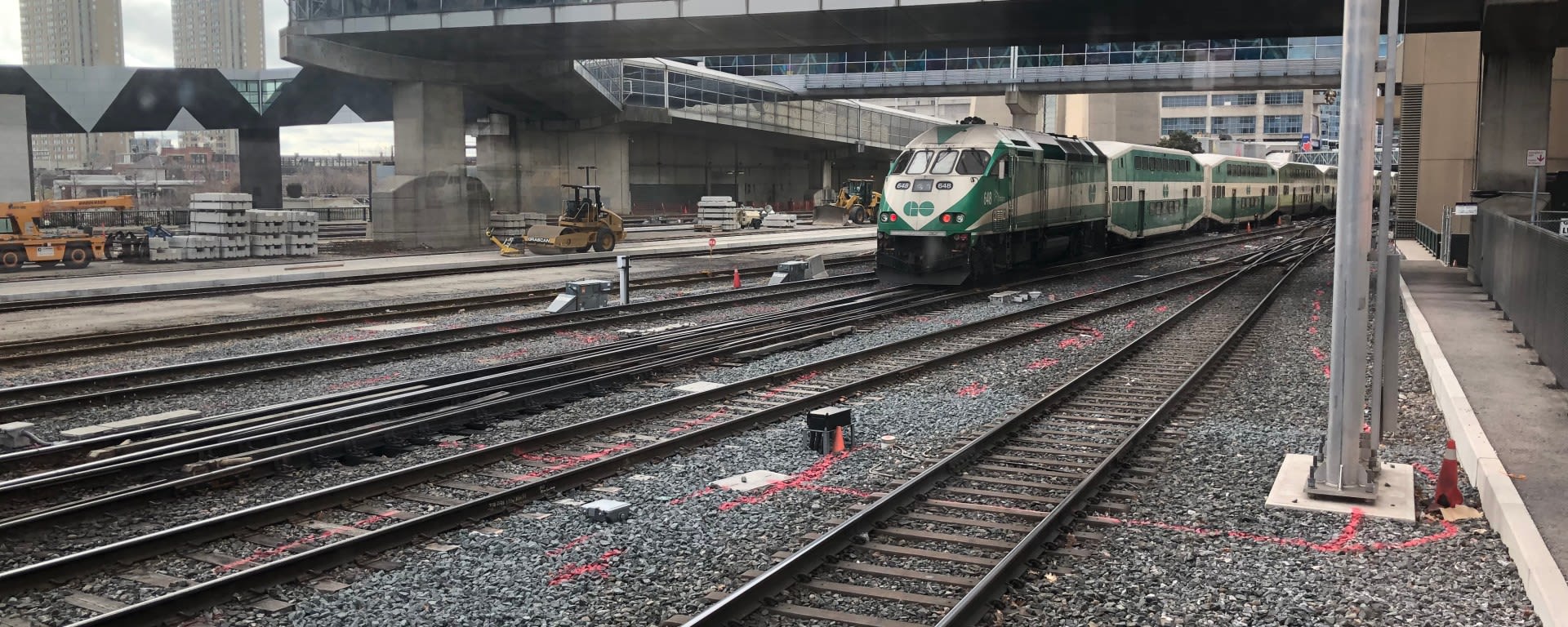Keeping GO rail corridors free of debris is a constant chore
The areas lining tracks are more difficult than your average kitchen to keep clean.
Apr 22, 2019
You’re on a GO train, staring out a window and thinking about finally getting back to your favourite spot to watch TV.
And then you spy a sofa casually sitting near the tracks. So you naturally wonder, as your train rumbles on and you lose sight of the lonely and lost love seat: “What’s that doing there?”
You’re not alone in questioning how all matter of rubbish and junk ends up dumped, or more likely pushed by winds, to collect along rail corridors in the Greater Golden Horseshoe region. But the dregs and dross of urban living collect as sure as snow in winter and leaves every fall. So that means a constant and needed housecleaning by specially trained crews, who work to keep the most active rail routes in Canada as clean as possible.
“We don’t always find large items like couches,” says Matthew Zambri, a Metrolinx project coordinator for corridor maintenance and track infrastructure. “It’s drug paraphernalia, coffee cups, alcohol bottles – things like that.
“But, occasionally we come across construction debris, couches and mattresses.”
The Union Station Rail Corridor (USRC) is a line of railway tracks that stretch through and are adjacent to Union Station in downtown Toronto. It’s approximately 6.4 kilometres long, and stretches from Strachan Avenue, in the west, to the Don River in the east, making it the largest rail passenger facility in Canada.
Unfortunately, due in large part to wind and occasional litterers, it collects a good amount of rubbish.
“Most of the trash we see – coffee cups, bottles, plastic bags – we believe is blown in from the wind as people can’t exactly throw their trash out of the train window,” says Zambri. “But, when it’s larger items like barbecues, couches, even mattresses – that’s usually someone trespassing to dump their garbage.
“We need to arrange specific cleaning crews for that.”
Union Station corridor clean-up is managed by the Corridor Maintenance Department through contracts with Toronto Terminal Railway. Regular cleanups are held in the spring and the fall but, if customers or community members alert us to a buildup of trash or large items that have been ditched, a crew is sent to clean it up as soon as possible.
Crews of approximately four trained staff hit the corridor to sweep for trash. Clean-up is done during the day and doesn’t interfere with train traffic as most of the garbage is on the sides of the corridor and not too close to, or on the tracks. At least one person in the crew is rules qualified under the Canadian Rail Operating Rules to ensure safety.
“Barbecues, tricycles, speakers, mattresses, couches, thousands of coffee cups – even a piano. We’ve seen it all and cleaned it all,” says Zambri.
Keeping the corridors clean isn’t just about appearances. Besides a need to keep debris away from rail lines, Metrolinx has a commitment to green initiatives and sustainability and works together with local communities to ensure all our surrounding spaces are kept litter free. For Earth Week 2019, which kicks off on April 22, Metrolinx is taking part in a number of green initiatives.
Beyond internal Metrolinx training, they include:
Friday, April 26: Metrolinx staff are participating in the City of Toronto’s annual 20-minute makeover and cleaning up areas surrounding Metrolinx offices in Toronto.
Saturday, April 27: Metrolinx, in partnership with AECOM, PNR Railworks and local community members, is participating in the Corktown Resident and Business Associations community cleanup.
You can join the clean-up crew. Come to the Corktown Common Park (155 Bayview Ave.) on April 27 from 10am – 12pm to help keep the community clean.
All of this work has recently earned Metrolinx the distinction as one of Canada’s Greenest Employers — for the third year in a row.
We can’t offer you a couch to relax on once you’re finished that hard work. An old and discarded chesterfield seen by customers as they relax on the GO is not what we consider a good window seat.
by Sara Wilbur Metrolinx communications senior advisor, subway program
